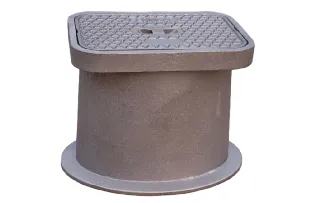copper pipe clamp repair
Copper Pipe Clamp Repair A Comprehensive Guide
When it comes to plumbing repairs, one common issue homeowners face is dealing with leaks in copper pipes. Copper pipes are favored for their durability and resistance to corrosion, but they can still develop leaks due to corrosion, physical damage, or improper installation. One effective way to repair a leaking copper pipe is through the use of pipe clamps, which provide a quick and lasting solution. In this article, we will explore the process of repairing copper pipes with clamps, the types of clamps available, and some important tips for ensuring a successful repair.
Understanding the Need for Copper Pipe Repair
Before diving into the repair process, it’s essential to understand why a copper pipe might leak. Common causes include
1. Corrosion Over time, copper pipes can corrode due to various factors such as chemical reactions with the water or surrounding soil. 2. Physical Damage Impact from external sources or freezing and thawing cycles can create cracks or breaks in the pipe. 3. Poor Installation Improper soldering or inadequate support can lead to strain on the pipes, causing them to fail.
Identifying the source of the leak is crucial before attempting any repairs. Once you’ve located the leak, it’s time to consider using a clamp as a repair solution.
Types of Pipe Clamps
There are several types of pipe clamps available, and each offers unique advantages
1. Rubber-lined Clamps These include a rubber lining to cushion the pipe and absorb vibrations. They are suitable for temporary repairs. 2. Metal Clamps Typically made from stainless steel, these provide a robust solution for leaks but may require additional sealing materials. 3. Repair Sleeves These are more extensive clamps designed to cover a section of the pipe and are ideal for more significant breaches.
Choosing the right type of clamp depends on the size and nature of the leak, as well as the surrounding conditions.
Steps for Repairing Copper Pipes with Clamps
1. Turn Off the Water Supply Before starting any repairs, ensure that the water supply to the affected area is turned off. This prevents further water damage and allows you to work on a dry surface.
copper pipe clamp repair

2. Dry the Area Use towels or rags to dry the area around the leak. This ensures that the clamp adheres properly and creates a better seal.
3. Clean the Pipe Use a wire brush or sandpaper to clean the area around the leak. Removing any corrosion or debris will improve the effectiveness of the clamp.
4. Select the Right Clamp Size Measure the diameter of the pipe to choose the appropriate-sized clamp. It should fit snugly but not be overly tight.
5. Position the Clamp Place the clamp over the leak, ensuring it covers the damaged area completely. For larger leaks, consider using a repair sleeve that spans a more extensive section of the pipe.
6. Tighten the Clamp Use a screwdriver or wrench to tighten the clamp securely. Be cautious not to overtighten, as this may cause additional damage to the pipe.
7. Check for Leaks After the installation, turn the water supply back on and observe the repaired area for any signs of leaks. If there are no leaks, you’ve successfully completed the repair.
Preventative Measures
To ensure the longevity of your repairs and minimize future leaks, consider the following preventative measures
- Insulate Pipes Insulating copper pipes can help prevent freezing and reduce the risk of cracks during cold weather. - Regular Inspections Periodically check your plumbing for signs of wear, corrosion, or leaks to catch issues before they become significant problems. - Professional Help If you notice frequent leaks or feel uncomfortable performing repairs, it may be best to consult a professional plumber for a thorough assessment.
Conclusion
Repairing leaking copper pipes with clamps can be a straightforward and effective solution for homeowners. By understanding the nature of the problem, selecting the appropriate clamp, and following proper repair techniques, you can successfully address leaks and restore the integrity of your plumbing system. Remember that prevention is key, so take proactive measures to keep your pipes in good condition and minimize the risk of future leaks.
-
Square Sewer Cover Enhances Urban SafetyNewsAug.01,2025
-
Pipe Fitting Requires Precise AlignmentNewsAug.01,2025
-
Manhole Step Is DurableNewsAug.01,2025
-
Manhole Cover Is Found WorldwideNewsAug.01,2025
-
Hole Cover Frame On RoadsNewsAug.01,2025
-
Gully Grate Improves Road SafetyNewsAug.01,2025
-
Man Hole Cover Round Load CapacityNewsJul.31,2025
